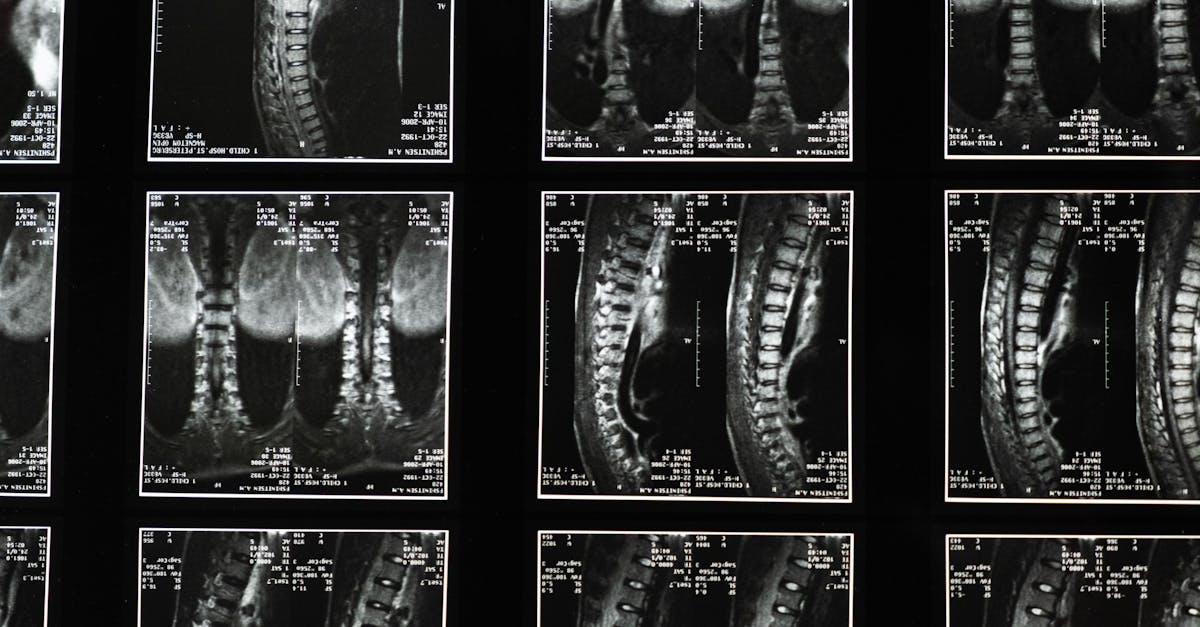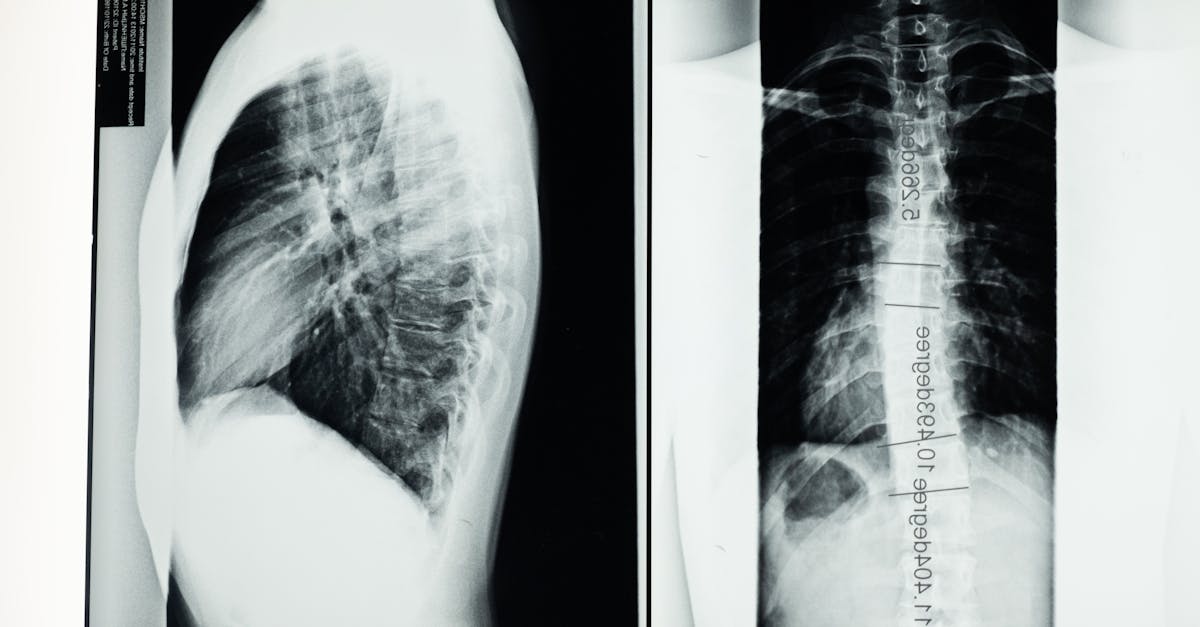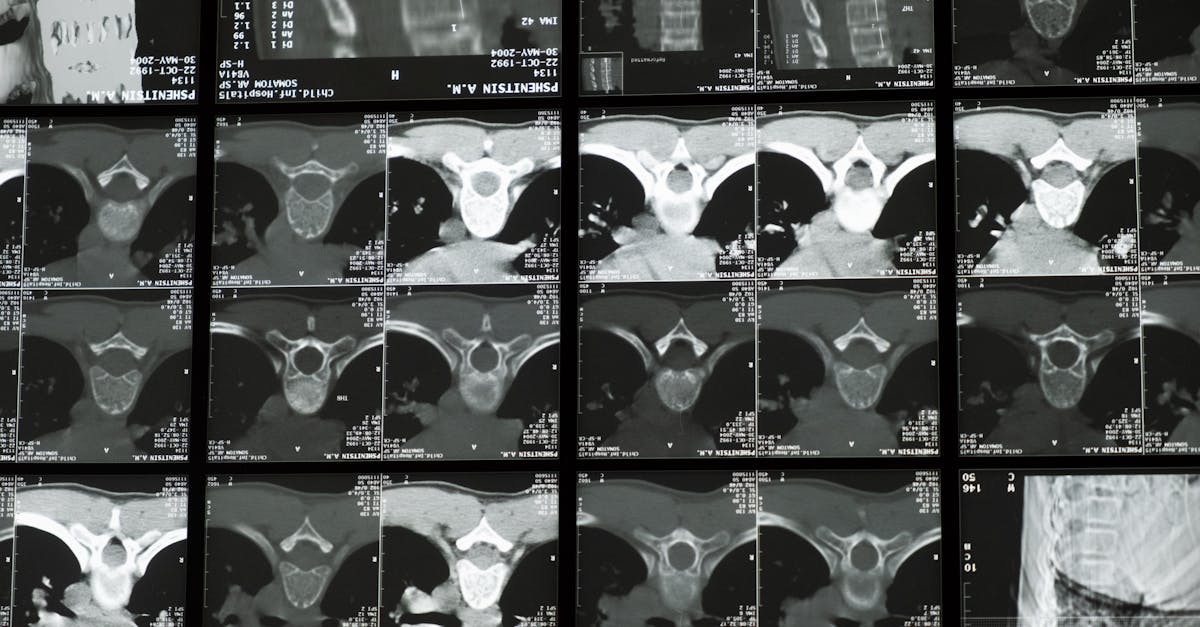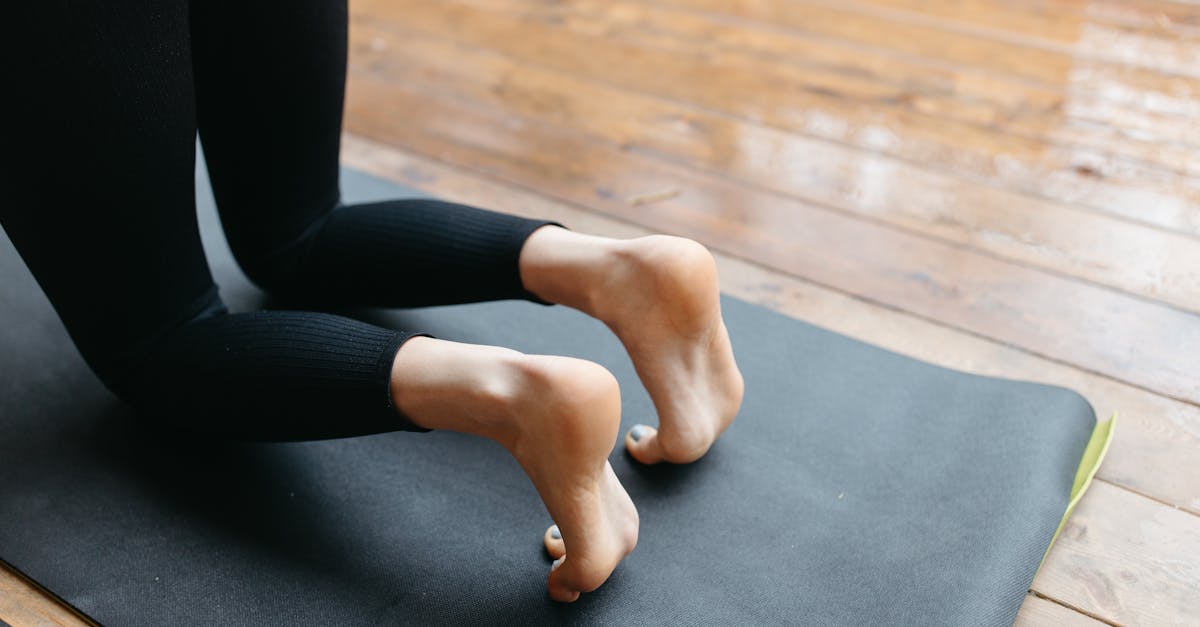|
In Short, non-invasive strategies for scoliosis prevention encompass a range of techniques designed to halt the progression of spinal curvature without requiring surgery. This approach includes options like physical therapy, bracing, and the Schroth Method, which promote overall spinal health and posture improvement. Individuals can expect reduced discomfort, enhanced mobility, and personalized treatment plans that cater to their specific needs. These methods not only cultivate stronger muscles around the spine but also foster a healthier alignment, making scoliosis management more accessible and effective for both children and adults. |
Non-invasive strategies for scoliosis prevention focus on maintaining a healthy spinal alignment and reducing the risk of progression of spinal curvature. Key methods include physical therapy designed to strengthen the back muscles and improve postural alignment, as well as bracing for growing children. Innovative techniques such as the Schroth Method offer personalized exercise programs tailored to individual spinal curvatures. Furthermore, a balanced nutrition plan and regular medical check-ups can play a significant role in monitoring and managing scoliosis. By promoting awareness and education, these approaches empower individuals to take proactive measures in their spinal health.

Discover Pulse Align: Your Path to Natural Balance
At Pulse Align, we provide a gentle, non-invasive method designed to restore the body’s natural balance and posture through imperceptible pulses. Our approach focuses on enhancing overall well-being by encouraging muscle tone symmetry, which often leads to reduced tension and discomfort in everyday life.
The Power of Recalibration
Pulse Align does not focus on addressing discomfort or specific conditions directly. Instead, we empower the body to recalibrate itself naturally. Clients frequently report notable improvements in their overall comfort and posture as they engage with our unique methods. By supporting the body’s innate ability to find balance, we create an environment conducive to wellness.
Client-Centric Approach
Our personalized approach shines through in the experiences shared by our clients. Many have found significant relief from feelings of tension and imbalance that previously affected their daily lives. Testimonies illustrate how individuals have enjoyed improvements in their neck and back symmetry, contributing to an enhanced sense of overall wellness. At Pulse Align, we celebrate these transformations as a natural part of your wellness journey.
Join Us on Your Wellness Journey
We invite you to explore the benefits of Pulse Align’s services. With clinics located in various areas, including La Prairie, Mont-Royal, and Terrebonne, you are sure to find a convenient location near you. To discover more about our safe, non-invasive, and family-friendly approach, visit our website, learn about our offerings, and book a consultation for yourself or your loved ones. Remember, Pulse Align complements your existing wellness regimen, working alongside your healthcare services to promote a truly holistic approach to health.
Medical Disclaimer
The information provided at Pulse Align does not replace the advice, diagnosis, or treatment of a healthcare professional. We recommend consulting your healthcare team for any health concerns.
- Postural Training: Focus on enhancing awareness of body alignment through daily activities.
- Regular Exercise: Engage in core-strengthening exercises to improve overall stability.
- Bracing Techniques: Utilize braces to provide the necessary support during critical growth phases.
- Schroth Method: Incorporate individualized exercises that address specific postural corrections.
- Physical Therapy: Tailored programs to strengthen muscles around the spine and enhance posture.
- Mindfulness Practices: Encourage mindfulness and body mechanics awareness to reinforce healthy movement.
- Nutrition: Maintain a balanced diet rich in vitamins essential for bone health.
- Regular Check-Ups: Schedule continuous monitoring with healthcare professionals for early detection.

Scoliosis, characterized by an abnormal curvature of the spine, can significantly impact an individual’s health and quality of life. Proactive measures for its prevention often emphasize non-invasive strategies, focusing on enhancing posture, muscle strength, and overall spinal health. This article highlights a combination of practical methods including physical therapy, bracing, custom exercise plans, and lifestyle adjustments that can collectively contribute to managing scoliosis effectively while minimizing discomfort.
Understanding Scoliosis
Scoliosis can manifest at various stages of life, with origins often traced back to childhood or adolescence. Early detection is crucial, allowing for timely intervention and support. Regular monitoring, alongside awareness of the signs of scoliosis, can significantly aid in implementing effective prevention strategies. Understanding the condition equips individuals and families with the knowledge to prevent its progression and related complications.
Physical Therapy: A Crucial Component
Physical therapy plays a central role in the non-invasive management of scoliosis. Tailored programs are designed to strengthen the muscles surrounding the spine, thus improving posture and flexibility. These therapies not only focus on building strength but also enhance body awareness, which is critical in maintaining proper alignment. Engaging in a regimen that includes core strengthening, stretching, and postural training can alleviate the stress placed on the spine, leading to improved function and reduced pain.
The Role of Bracing
Bracing is a well-established method for children and adolescents with moderate scoliosis. It involves the use of specialized devices that help maintain the spine in a straighter position during crucial growth periods. The application of braces can prevent further curvature development while promoting proper alignment. Regular consultations with healthcare professionals are essential to assess the progression of scoliosis and to ensure braces are fitting correctly for maximum effectiveness.
Customized Exercise Plans
Incorporating customized exercise plans is integral to managing scoliosis non-surgically. Exercise routines that are specifically designed to target the spine and surrounding muscles can help enhance stability and flexibility. Activities like yoga and Pilates are particularly beneficial, as they promote body awareness, core strength, and flexibility. By engaging in these practices, individuals can develop a solid foundation for spinal health, thereby reducing the progression of scoliosis.
Nutrition and Lifestyle Adjustments
Nutrition significantly influences overall health, including spinal integrity. A diet rich in vitamins and minerals strengthens bones and aids muscle health. Additionally, maintaining a healthy lifestyle incorporating adequate hydration and regular physical activities plays a crucial role in supporting a well-functioning musculoskeletal system. Regular check-ups with healthcare professionals ensure that individuals remain vigilant about their spinal health while also maintaining a proactive lifestyle.
Awareness and Education
Raising awareness about scoliosis is paramount in prevention efforts. Parents, educators, and coaches should be informed about the signs and symptoms of scoliosis, facilitating early detection and intervention. Cultivating a culture of posture awareness among children empowers them to adopt habits that support spinal health throughout their lives.
Holistic Approaches
Embracing a holistic approach aligned with the principles of Pulse Align can further enhance the effectiveness of non-invasive strategies. Focusing on neuromuscular recalibration involves fostering body awareness and balance, aiding individuals in creating a strong connection between their mind and body. This intricate approach supports the body’s natural healing processes, promoting optimal posture and comfort over time.
| Strategy | Description |
|---|---|
| Observation | Regular monitoring to foster awareness of posture, promoting natural body alignment. |
| Bracing | Gentle support to encourage better body positioning during growth periods. |
| Physical Therapy | Customized exercises designed to improve muscle tone and promote overall balance. |
| Schroth Method | Targeted movements for body recalibration, enhancing neuromuscular alignment. |
| Yoga | Promotes flexibility and strength while encouraging awareness of body mechanics. |
| Pilates | Focuses on core strength and stability, aiding in natural postural improvement. |
| Nutritional Support | A balanced diet enhances overall health and supports body function without focusing on specific ailments. |
| Mindfulness Practices | Encourages conscious awareness of movement patterns for better alignment. |
| Bodyweight Exercises | Engages muscle support for stability and functional balance in daily activities. |
| Regular Check-Ups | Maintains a proactive approach to wellness, ensuring healthy progress. |
Client Testimonials: Embracing Wellness Through Non-Invasive Strategies
Many clients have discovered the transformative power of Pulse Align’s unique approach to preventing scoliosis through non-invasive strategies. In locations like La Prairie and Mont-Royal, testimonials are pouring in about the significant improvements individuals experience in their daily lives. One client from La Prairie shared, “Since starting the sessions, I’ve noticed a marked difference in my posture and overall sense of well-being. It’s like my body is reclaiming its natural balance!”
Clients across Terrebonne and Sainte-Marie are expressing similar sentiments. A mother from Terrebonne recounted, “I brought my daughter here for posture training, and the changes have been incredible. Not only has her discomfort lessened, but she also feels more confident in her body.” This positive feedback highlights Pulse Align’s commitment to supporting clients’ journeys through holistic wellness techniques that promote natural recalibration.
In Chicoutimi, another client noted, “I appreciate the collaboration between Pulse Align and my healthcare team. This support has empowered me to take charge of my health and well-being. It feels amazing to find solutions that work.” Such stories illustrate how clients feel nurtured and motivated by the welcoming and supportive environment at Pulse Align, making strides toward better spinal health.
Whether in Châteauguay or Deux-Montagnes, individuals are increasingly recognizing the value of Pulse Align’s services. One client from Saint-Jérôme stated, “Engaging with the gentle, non-invasive methods has been a game changer for me. I can actively participate in my wellness journey, feeling empowered every step of the way.” This sentiment underscores the importance of community involvement in wellness, as many clients see their experiences as part of a broader movement toward health.
Pulse Align’s methods truly stand apart by promoting wellness and enhancing body function in a comprehensive manner. As more clients share their success stories, it becomes clear that this approach not only alleviates discomfort but also supports emotional and physical wellness. To explore how Pulse Align can assist you or your family on your journey to better health, visit Our Clinics to find a location near you.
The journey toward effectively managing and preventing scoliosis has garnered significant attention in recent years, particularly through non-invasive strategies. At the forefront of this movement is Dr. Sylvain Desforges, a recognized expert in osteopathy, naturopathy, and manual medicine. His unwavering commitment to healthcare innovation has proved instrumental in shaping the landscape for non-surgical treatments designed to combat scoliosis and address various spinal disorders.
As the founding president of TAGMED clinics and the ACMA association, Dr. Desforges has dedicated his professional life to developing advanced methodologies for chronic pain management. His expertise lies not only in manual therapies but also in the integration of cutting-edge technologies that offer substantial benefits in treating complex conditions. His approach combines scientific rigor with holistic care, ensuring that patients receive the best possible support in their journey toward health.
In the realm of scoliosis prevention, non-invasive interventions have gained traction. One of the core strategies involves promoting muscle strengthening and posture awareness. Dr. Desforges emphasizes the significance of tailored physical therapy schedules that specifically target crucial muscle groups surrounding the spine. This proactive engagement allows early intervention, reducing the risk of curvature progression and promoting overall spinal health.
Furthermore, the application of specialized practices such as the Schroth Method has become integral to the regimen of patients seeking to manage scoliosis. This method encourages patients to engage in exercises particularly tailored for their unique spinal curvature, fostering adaptive movement patterns that enhance alignment. By fostering an understanding of one’s body and encouraging consistency with individualized exercises, clients can take charge of their well-being and minimize the potential advancement of scoliosis.
Bracing also plays a critical role in non-invasive strategies, particularly for adolescents experiencing growth spurts. Employing custom braces designed to support spinal alignment throughout developmental phases has demonstrated effectiveness in preventing curvature from worsening. Dr. Desforges encourages parents to leverage regular check-ups and assessments during these formative years to facilitate timely modifications in treatment approaches if necessary.
In addition to physical rehabilitation strategies, the importance of proper nutrition cannot be overstated in the context of spinal health. Dr. Desforges advocates for diets rich in essential nutrients that promote bone density, muscle function, and overall structural integrity of the body. His emphasis on nutritional support underscores a comprehensive approach that cohesively integrates physical and dietary strategies for optimal health.
For those seeking ongoing support, facilities such as TAGMED clinics in Montréal, Terrebonne, and Mont-Royal provide an accessible environment for individuals looking to engage in non-invasive interventions. Patients benefit from a multidisciplinary approach, wherein various healthcare professionals collaborate to create optimized treatment plans tailored to meet individual needs. This team-oriented model ensures that patients are not only treated for their current conditions but are also educated on strategies they can adopt in their daily lives to support their long-term health.
Through his tireless efforts, Dr. Sylvain Desforges continues to redefine the standards of care surrounding scoliosis prevention with non-invasive strategies. By leveraging advanced technologies in conjunction with holistic methods and patient education, he underscores the belief that every individual can take significant steps toward reclaiming and maintaining their health without the need for invasive surgical interventions. This comprehensive vision paves the way for a healthier future for all, particularly those at risk of developing scoliosis.
Enhancing Patient Conditions with TAGMED Neurodecompression Technology
Mechanism of Action
The TAGMED neurodecompression technology operates by applying a controlled and progressive traction force to the spinal column. This method involves carefully adjusting the tension on the spine, resulting in an increased space between the vertebrae. Such spacing is crucial as it effectively reduces pressure on the intervertebral discs and nerve roots. By alleviating this pressure, TAGMED promotes a better fluid circulation in the targeted area, which is essential for healing. This process not only reduces inflammation but also contributes to pain relief by enhancing movement and flexibility in the spinal region.
Specific Benefits
This non-invasive method is particularly effective for managing chronic pain and symptoms associated with conditions such as disc herniation, bulging discs, and moderate to severe spinal or foraminal stenosis. By significantly reducing the pressure on sensitive nerve structures and optimizing fluid circulation around the discs, TAGMED neurodecompression enables a quicker recovery. Patients frequently report experiencing a marked improvement in their quality of life, with reduced pain levels and increased mobility, thus contributing to a greater overall well-being.
Comparison with Other Treatments
When compared with traditional treatment options such as painkillers, corticosteroid injections, surgery, or conventional physical therapy, TAGMED’s neurodecompression stands out for its minimal invasiveness and lower associated risks. Many of these conventional treatments, while effective, carry potential side effects and complications. TAGMED technology, however, minimizes these risks and offers patients an opportunity for a faster recovery. Reports from patients indicate that they not only experience less discomfort during treatment but also return to their normal activities much sooner.
Case Studies and Testimonials
Numerous patients have benefited from the TAGMED neurodecompression treatment. For instance, one patient suffering from chronic lower back pain attributed to a herniated disc experienced a sustained decline in pain after just a few sessions. They report returning to their daily routines and enjoying activities they had previously avoided due to discomfort. Another patient noted how their reliance on pain medications diminished significantly, allowing them to engage in physical activity without worry. Testimonials echo a common theme of empowerment and relief, showcasing the effectiveness of this innovative treatment.
Conclusion on Non-Invasive Strategies for Scoliosis Prevention
In recent years, the focus on non-invasive strategies for scoliosis prevention has garnered significant attention from both healthcare professionals and patients alike. This emphasis on holistic and proactive approaches enables individuals to take control of their spinal health through various methods designed to prevent the progression of scoliosis.
Key among these strategies is physical therapy, which plays an essential role in strengthening the muscles surrounding the spine and improving overall posture. Tailored programs that incorporate exercises specifically designed for scoliosis can effectively target individual needs. Techniques such as the Schroth Method further enhance these efforts by providing personalized interventions that help correct abnormal spinal curvature.
Bracing, especially for children and adolescents, has proven to be an effective non-surgical option. By applying targeted support, braces can prevent the worsening of spinal curvature during critical growth periods. Additionally, ongoing monitoring by healthcare professionals ensures that early signs of scoliosis are detected and managed promptly.
Nutritional support also plays a vital role in scoliosis management. A balanced diet rich in essential vitamins and minerals is crucial for maintaining bone density and muscle strength, both of which are necessary for spinal health. Regular check-ups and an open dialogue with healthcare providers create an environment where families feel empowered to act proactively.
Ultimately, the integration of these non-invasive strategies fosters a culture of posture awareness and promotes lifelong habits that support spinal health. With a comprehensive approach that includes education, tailored exercise, and ongoing care, individuals can significantly enhance their quality of life while minimizing discomfort associated with scoliosis. Embracing these preventive measures is essential for achieving a stronger, healthier spine and overall well-being.
Do you suffer from a chronic condition that responds little or not at all to conservative treatments?
Pulse Align offers a non-invasive, innovative method designed to help restore the body’s natural balance and posture through gentle, imperceptible pulses. This unique approach aims to reduce muscle and joint tension, fostering overall wellness and enhancing the body’s ability to recalibrate itself naturally. Clients seeking to improve their posture and regain a sense of fluidity in movement can find a welcoming space at Pulse Align, where the goal is to nurture and support natural processes.
Rather than concentrating on discomfort, Pulse Align emphasizes the body’s innate potential for realignment and balance. By gently stimulating the body, many clients have noted significant improvements in overall well-being, which often leads to enhancements in posture and comfort. This holistic approach not only targets alignment but also fosters a deeper connection between mind and body, encouraging a more integrated sense of health and vitality.
At Pulse Align, our personalized approach allows us to meet clients where they are, addressing individual needs and preferences. Many clients share their transformational experiences with our services, citing decreased tension in their neck and back, enhanced mobility, and improvements in overall wellness. The feedback we receive consistently highlights the positive changes they’ve felt since starting their journey with us, underscoring our commitment to fostering a supportive environment where clients feel empowered to take charge of their well-being.
We invite you to explore how Pulse Align can enhance your wellness journey by visiting our website to learn more about our services. With clinics located in cities like La Prairie, Mont-Royal, and Terrebonne, finding a nearby Pulse Align clinic is easy. Our approach is designed to complement your existing healthcare services, ensuring that you remain under the supervision of your healthcare team. Experience our *safe*, *non-invasive*, and *family-friendly* environment firsthand and see how we can be a valuable addition to your wellness routine.
Don’t hesitate! For more information about our services and to book your consultation, visit us at Pulse Align. Together, we can support a journey toward greater balance and improved well-being for you and your family.
Frequently Asked Questions
Posture Imbalance, body misalignment
Can mobile apps help improve posture?
Yes, some apps offer reminders, exercises, and visual assessments to help correct posture.
How long does it take to improve misalignment?
The timeframe varies depending on severity. With consistent effort, it may take a few weeks to a few months to see significant improvements.
Can postural imbalance be prevented?
Yes, by maintaining proper posture, exercising regularly, and ensuring good workplace ergonomics, you can help prevent it.
Can I use a posture-correcting belt?
A posture belt can provide temporary support, but addressing the root causes and strengthening muscles is key for lasting results.
Does footwear choice affect posture?
Absolutely, inappropriate shoes can alter foot biomechanics, affecting overall posture and body alignment.
How can I adapt my workstation to improve posture?
Adjust chair height, position the screen at eye level, use a footrest, and ensure forearms are parallel to the floor.
Do morning stretches help?
Yes, gentle morning stretches relax muscles, prepare the body for the day, and help maintain better posture.
Can wearing orthotics help correct postural imbalance?
Yes, in some cases, orthopedic insoles or braces can help balance the body and reduce compensatory posture patterns.
Can poor posture cause jaw pain?
Yes, improper head and neck alignment may create tension in the jaw, leading to pain or TMJ issues.
How do I maintain achieved progress?
Continue exercising, stay attentive to daily posture, and have regular check-ups with a professional.
Gabriel Dupuis knows that life’s pains can often be traced back to the way we sit, stand, and move. As a Posture Awareness Advocate at Pulse Align, he’s committed to showing readers how small adjustments in alignment can bring big relief. With a blend of empathy and evidence-based research, Gabriel translates the science of posture into practical steps that help ease discomfort, protect against injury, and restore natural balance. He believes that everyone deserves to feel strong, stable, and pain-free—and through his writing, he offers the guidance and encouragement to help readers reach that goal.
Medical Disclaimer
The information and advice provided on this site do not replace the advice, diagnosis, or treatment of a healthcare professional. Please note that the author of this article is neither a doctor nor a specialist in a medical specialty as defined by the Collège des médecins du Québec. Manual medicine, functional medicine, and sports medicine as described on this site exclude any medical treatment or diagnosis made by a doctor or medical specialist. Always consult your doctor for any medical questions. For more details, please read our complete Legal Notice.




